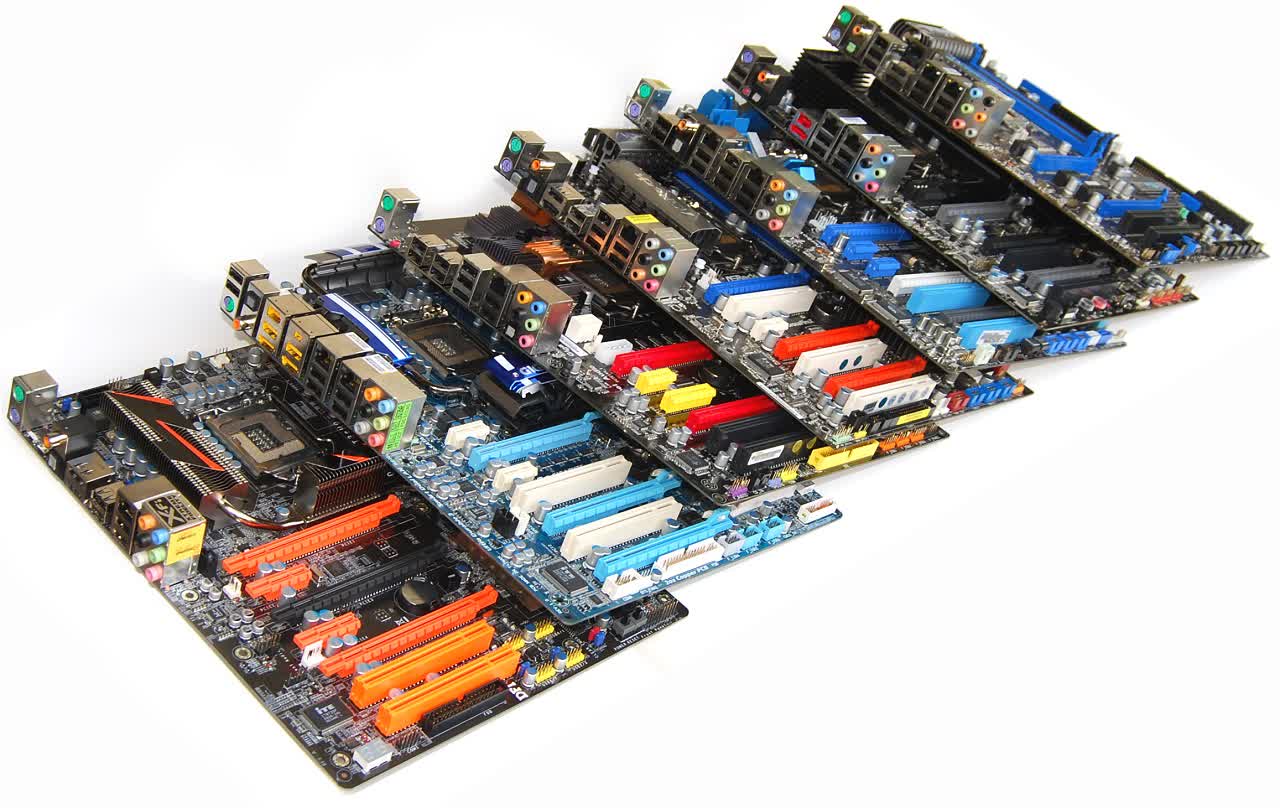DFI LanParty DK P55-T3eH9 – Features
Unlike Asrock and Asus it appears that DFI is pinning all their P55 hopes and dreams on just a few select motherboards. In fact, as I write this the LanParty DK P55-T3eH9 is their only P55 motherboard on sale, though we do know of a few others still in the works. Availability does not appear to be that great, either. We only found a handful of online retailers that were actually selling this motherboard.

The DFI LanParty DK P55-T3eH9 is targeted at a similar audience to the Asus P7P55D Deluxe, though on average it appears to be almost 15% cheaper. Although it forfeits a few features compared to the latter, such as Firewire and a secondary Gigabit LAN port, for the most part this looks to be another well equipped P55 motherboard. Let's check the features out in greater detail.

In total the board can support up to 9 SATA devices, just like the P7P55D Deluxe, via the same JMicron controllers. Providing the board with its powered eSATA port is the JMicron JMB363 controller, while the JMB322 boosts onboard SATA ports from 6 to 8.


Given that the LanParty DK P55-T3eH9 motherboard is targeting gamers there are three PCI Express x16 slots. Again, when using two graphics cards in either Corssfire or SLI mode, the available bandwidth is halved as each port is limited to x8 bandwidth. The second generation PCI Express interface still provides today's graphics cards with more than enough bandwidth even when operating at x8 rather than x16.


The board's audio is taken care of by the Realtek ALC885 codec, one of the cheapest used by any of the P55 motherboards in our roundup. Despite this the ALC885 is still a decent solution offering 8-channel HD audio.
Although DFI may not have included the very best audio codecs in this relatively expensive P55 motherboard, they have gone for a quality network controller. The Intel 82578DC makes this the only motherboard in our roundup to feature a quality network controller, as all other manufacturers opted for cheaper Realtek solutions.
Something interesting about the LanParty DK P55-T3eH9 is that it includes a mini USB port on the I/O panel, which at first appears to be a near useless feature, but is actually a stroke of brilliance: it allows users to quickly and easily resurrect their system in the event of a BIOS flash going wrong.
Although BIOS updates are a lot less scary than they use to be, things can still go awry and generally when that happens there is no easy fix. Instead of having to send your motherboard back to the manufacturer so that the BIOS chip can be replaced, DFI's solution allows the user to re-flash the motherboards BIOS from another computer using the mini USB port and a special software.
Of course you will need another system to complete this process but stumbling across a desktop or laptop in this day and age is considerably easier than shipping the board back to Taiwan.
As luck would have it while working on this very roundup I ran into this problem when testing the MSI P55-GD65, which we will detail a few pages later, though because this happened to an MSI board and not the LanParty DK P55-T3eH9 it was in fact quite unfortunate. What happened was that MSI emailed us an updated BIOS for their P55-GD65 motherboard and strongly suggested that we use it in our tests.
Therefore we proceeded to install the new BIOS. The update was seemingly a success, or so it was reported by the provided software, but the board was never able to boot up again. Having tried all the standard recovery methods we were unable to breathe life back into this brand new and virtually unused motherboard.
After shipping the board back to MSI we received a new P55-GD65 to complete our testing. All this stuffing around could have been easily avoided had the MSI board featured the same BIOS recovery technology as the LanParty DK P55-T3eH9. However, do not expect other manufacturers to simply copy this feature. DFI has patented the technology, meaning it will remain exclusive to their motherboards, or at the very least competitors will have to pay royalties if they want to implement it on their own products.
